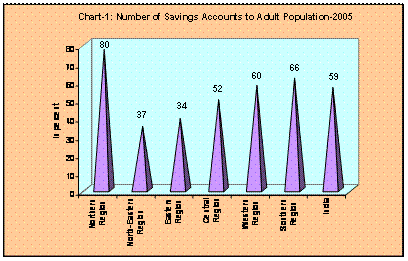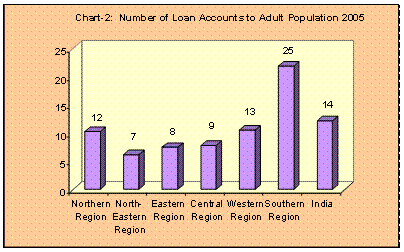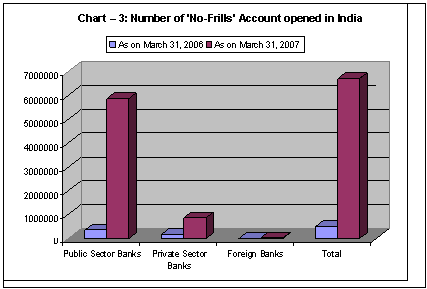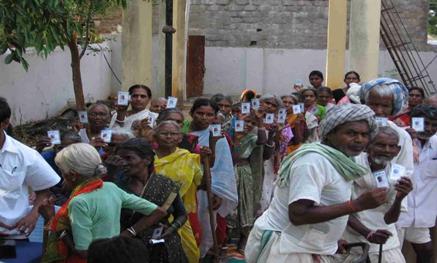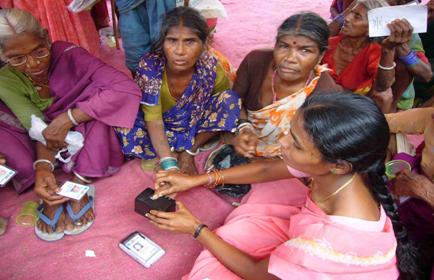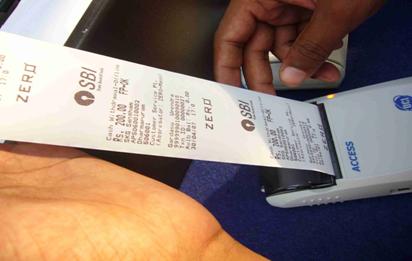 IST,
IST,


Financial Inclusion - The Indian Experience
Smt. Usha Thorat, Deputy Governor, Reserve Bank of India
delivered-on جون 19, 2007
Ladies and gentlemen, I thank Her Majesty’s Treasury and DFID for organising this conference and inviting the Reserve Bank of India to share India’s experiences in achieving greater financial inclusion (FI). We, in India, have been greatly impressed by the focused attention being paid by the UK Government to the subject of FI. I had read a very detailed report by the British Banker’s Association in 2000 dwelling upon the issues involved in providing greater access to financial services and the concept of a basic banking account. The setting up the Financial Inclusion Task Force and the Financial Inclusion Fund reflect the priority attached by the Government to the subject. DFID has been involved in a number of livelihood diversification projects in India and other countries especially for the marginalised and DFID’s stake in the subject obviously derives from the development aspect of FI. The interest shown by authorities in different countries in FI clearly show that there are concerns that large segments of the world’s population are excluded from formal payments system and financial markets while financial markets are developing and globalising rapidly. There is an obvious market failure and thus governments and financial sector regulators are seeking to create enabling conditions such that markets become more open, more competitive, affordable and inclusive. Focus
of financial inclusion in India The approach to FI in developing countries such as India is thus somewhat different from the developed countries. In the latter, the focus is on the relatively small share of population not having access to banks or the formal payments system whereas in India, we are looking at the majority who are excluded. FI can be thought of in two ways. One is exclusion from the payments system –i.e. not having access to a bank account. The second type of exclusion is from formal credit markets, requiring the excluded to approach informal and exploitative markets. After nationalisation of major banks in India in 1969, there was a significant expansion of branch network to unbanked areas and stepping up of lending to agriculture, small industry and business. More recently, the focus is on establishing the basic right of every person to have access to affordable basic banking services. Measures of financial exclusion
One common measure of FI is the percentage of adult population having bank accounts (Chart-1). Going by the available data on the number of savings bank accounts and assuming that one person has only one account, (which assumption may not be correct as many persons could have more than one bank account) we find that on an all India basis 59 per cent of adult population in the country have bank accounts – in other words 41 per cent of the population is unbanked. In rural areas the coverage is 39 per cent against 60 per cent in urban areas. The unbanked population is higher in the North Eastern and Eastern regions.
The extent of exclusion from credit markets can be observed from a different view point. Out of 203 million households in the country, 147 million are in rural areas – 89 million are farmer households. 51.4 per cent of farm households have no access to formal or informal sources of credit while 73 per cent have no access to formal sources of credit. Similar data are not available for non farm and urban households. Looking at the different sources of credit, it is observed that the share of non institutional sources reduced from 70.8% in 1971 to 42.9% in 2002. However after 1991, the share of non institutional sources has increased; specifically, the share of moneylenders in the debt of rural households increased from 17.5 % in 1991 to 29.6% in 2002. In urban areas the share of non institutional sources has come down significantly from 40% in 1981 to around 25 % in 2002. Who are the excluded? The financially excluded sections largely comprise marginal farmers, landless labourers, oral lessees, self employed and unorganised sector enterprises, urban slum dwellers, migrants, ethnic minorities and socially excluded groups, senior citizens and women. While there are pockets of large excluded population in all parts of the country, the North East, Eastern and Central regions contain most of the financially excluded population. Reasons
for financial exclusion Recent initiatives
by Reserve Bank of India In the Annual Policy of the Reserve Bank for
2004-05, the Governor, Dr. Reddy observed and I quote - Pursuant to this, the Reserve Bank has undertaken a number of measures with the objective of attracting the financially excluded population into the structured financial system. In November 2005, banks were advised to make available a basic banking ‘no-frills’ account with low or nil minimum balances as well as charges to expand the outreach of such accounts to vast sections of the population. Banks are required to make available all printed material used by retail customers in the concerned regional language. In order to ensure that persons belonging to low income group, both in urban and rural areas do not encounter difficulties in opening bank accounts, the know your customer (KYC) procedures for opening accounts has been simplified for those persons with balances not exceeding Rs 50000/- (about GBP 600) and credits in the accounts not exceeding Rs.100000/- (about GBP 1200) in a year. The simplified procedure allows introduction by a customer on whom full KYC drill has been followed. Banks have been asked to consider introduction of a General purpose Credit
Card (GCC) facility up to Rs. 25000/- at their rural and semi urban braches. The
credit facility is in the nature of revolving credit entitling the holder to withdraw
upto the limit sanctioned. Based on assessment of household cash flows, the limits
are sanctioned without insistence on security or purpose. Interest rate on the
facility is completely deregulated. In January 2006, banks were permitted to utilise the services of non-governmental organisations (NGOs/SHGs), micro-finance institutions and other civil society organisations as intermediaries in providing financial and banking services through the use of business facilitator and business correspondent (BC) models. The BC model allows banks to do ‘cash in - cash out’ transactions at the location of the BC and allows branchless banking. Other measures include setting up pilots for credit counselling and financial education. A multilingual website in 13 Indian languages on all matters concerning banking and the common person has been launched by the Reserve Bank on 18 June 2007. Strategies
and approach In the districts taken up for 100% financial inclusion, surveys were conducted using various data base such as electoral rolls, public distribution system, or other household data, to identify households without bank account and responsibility given to the banks in the area for ensuring that all those who wanted to have a bank account were provided with one by allocating the villages to the different banks. Mass media was deployed for creating awareness and publicity. The banks used different approaches to communicate the advantages of having a bank account. Bank staff or their agents who are usually local NGOs or village volunteers would contact the people at their households. Ration card / Electoral ID cards of the families were taken for fulfilling the simplified KYC norms. Photographs of all the persons who opened bank accounts were taken on the spot by a photographer accompanying the bank team. In most States, the product used for launching the program for financial inclusion is the ‘No frills’ accounts. In one State the farmer’s credit card or KCC is being used ensuring first to credit rather than savings. In other States no frills account was followed by small overdraft facility or a general purpose revolving credit upto pre-specified limit. Recognizing the need for providing social security to vulnerable groups, in some cases in association with insurance companies, banks have provided innovative insurance policies at affordable cost covering life, disability and health cover. Cooperative banks and regional rural banks being local level institutions are well suited for achieving financial inclusion. These banks are being revived and strengthened with incentives for better governance. Being local institutions they are ideally suited for achieving FI. The role of an efficient payments system for FI cannot be overstressed and we efforts are being made to bring about Improvements in the payments system especially in the relatively less developed parts of the country. Huge increase in no frills accounts
The outcome of the efforts made is reflected in the increase of 6 million new ‘no frills’ bank accounts opened between March 2006 and 2007. In view of their vast branch network (45000 rural and semi urban branches) public sector banks and the regional rural banks have been able to scale up their efforts by merely leveraging on the existing capacity. FI is being viewed by these banks as a huge business opportunity in an overall environment that facilitates enterprise and growth. It provides them a competitive advantage and defines a clear niche for their growth. Use of intermediaries Initiative of a State Government - pictures of technology at work Pensioners
with Bio-metric cards line-up to receive payments Biometric
validation of Smart Card
Work in progress The Finance Minister in his budget for 2007-08 has announced the setting up of two funds for FI; the first called Financial Inclusion Fund for developmental and promotional interventions and the other called Financial Inclusion Technology Fund to meet cost of technology adoption of about $ 125 million each. The scope of these funds is being worked out. Setting up of financial literacy centres and credit counseling on a pilot basis, launching a national financial literacy campaign, forging linkages with informal sources with suitable safeguards through appropriate legislation, evolving industry wide standards for IT solutions, facilitating low cost remittance products are some of the initiatives currently under way for furthering FI. Thank You. Text of speech by Smt. Usha Thorat, Deputy Governor, Reserve Bank of India at the HMT-DFID Financial Inclusion Conference 2007, Whitehall Place, London, UK on June 19, 2007. |






